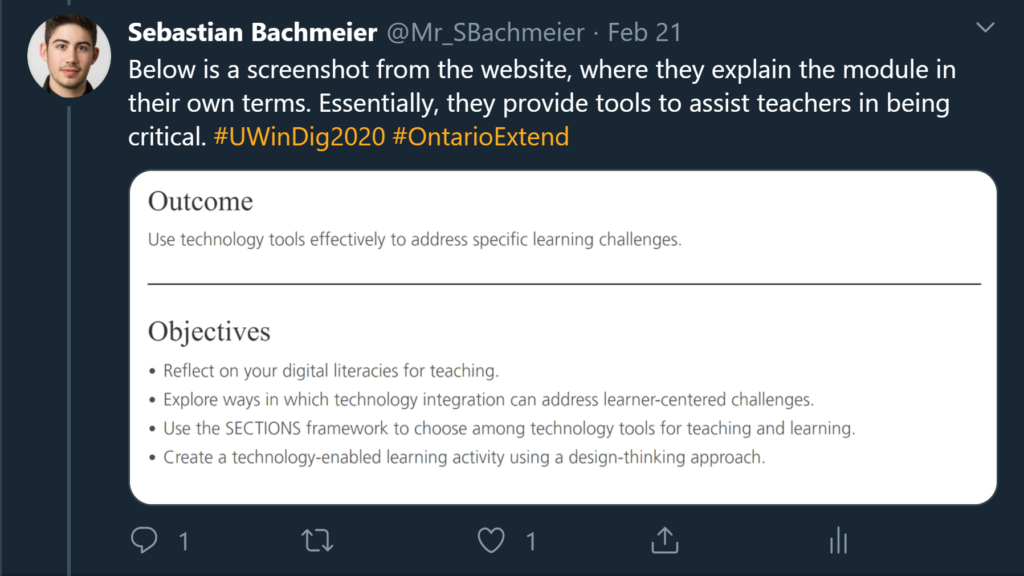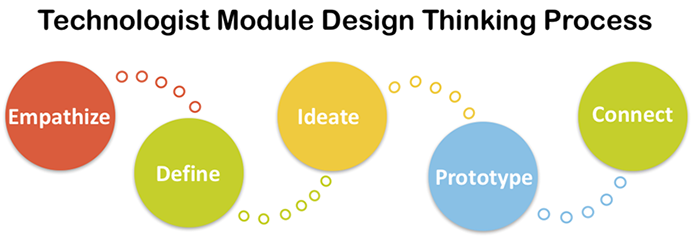For the second multimedia reflection I responded to the Technologist Module of Ontario Extend’s website using the format of a Twitter essay. I am not a frequent Twitter user so this format was somewhat new to me outside of the limited experience I had during class. On the whole I found the experience to be fairly painless — despite the spotty Internet connection I experienced throughout creating the thread — and I enjoyed the fact that I could dig fairly deeply into the module itself.

Ontario Extend lists their outcome and objectives at the beginning of the module as a guide to keep in mind as one reads through the various sections. This I found to be a helpful lens through which to view the content, and having these outcomes in the back of my mind as I digested the material helped me synthesize the main ideas of the module as a whole. The entire idea is to provide resources for teachers to help them use technology more meaningfully in the classroom, as well as a system that can be used to help even the most technologically-inexperienced educator find ways in which tech can solve problems for learners in there classroom.
The system which the Technologist module uses is the Design Thinking Process. It has several stages which are easy to remember and flow extremely logically from one to the next. It is an excellent way to assess what the true challenges are in the classroom, and takes a very student-centered approach to finding or creating technology which addresses these challenges.

The biggest strength for Ontario Extend’s module is that they link to a number of valuable and concise resources to help teachers follow the Design Thinking Process. For example, in the “empathize” section, the site provides a handy Empathy Map for teachers to print and use (as well as an example of a completed version). Throughout the other sections they also give suggestions for various tech tools one might use to help them along the process, as shown below from the “ideate” section. These links and downloadable documents ensure that there are no barriers to the successful application of their module.

All in all, I think that the Technologist module is an extremely valuable resource for all educators in the 21st Century. Technology is an inescapable part of modern life, and it is our responsibility as educators to incorporate it into the lessons we teach in truly meaningful ways. It is very easy to use tools on a surface level, but few have unlocked the true potential that technology has in the modern classroom. This module is the perfect starting place to begin the journey of meaningfully integrating technology in lessons, and is a very clear step-by-step guide to achieve that end by asking the right questions and always keeping the students in mind.
